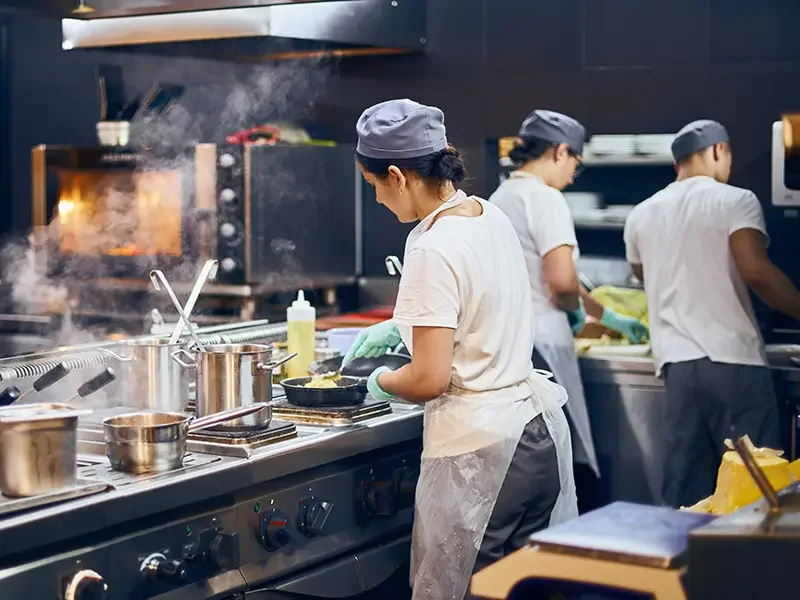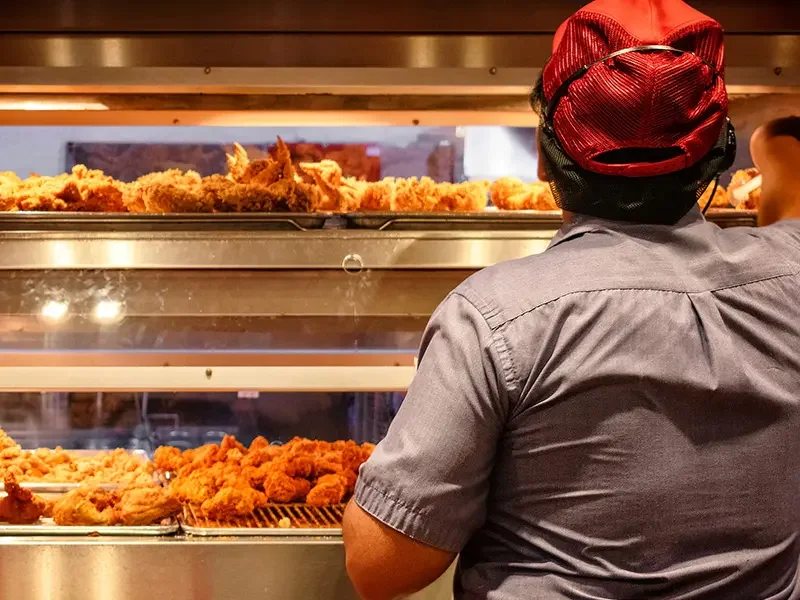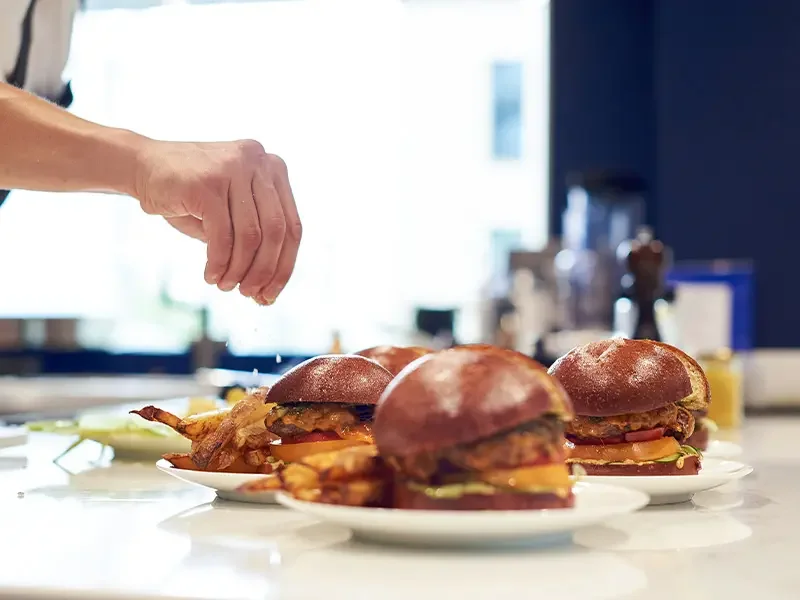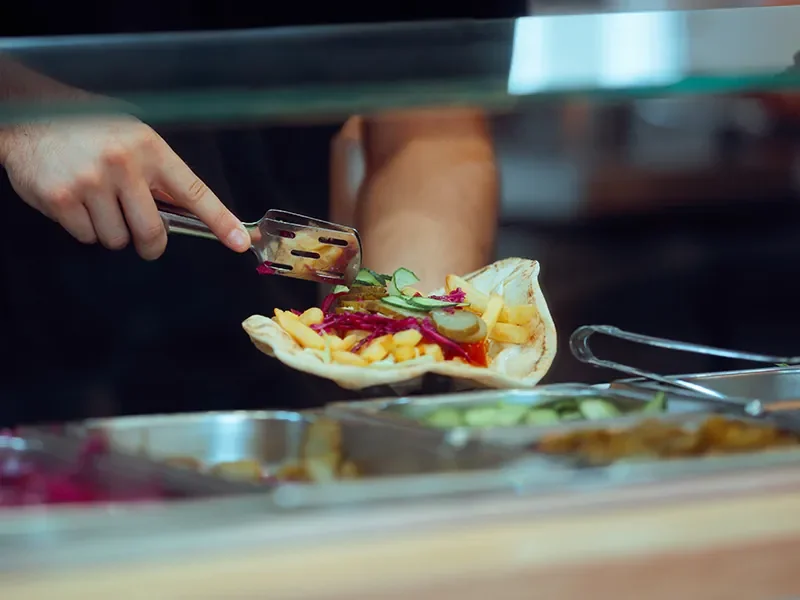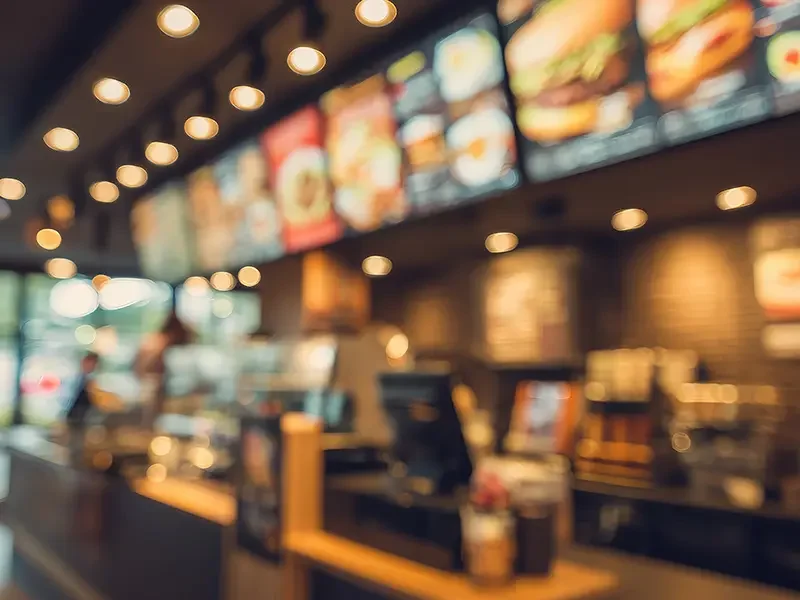
Operational Support Services: From Back-of-House to Front-of-House Excellence
Why brands choose F!S Group for operational support
In foodservice, even the most exciting menu will fail if your operations can’t deliver it consistently, quickly, and profitably. A guest doesn’t judge you on the kitchen you planned; they judge you on the experience they had. That means operational performance is just as important as product quality or marketing.
At Food Innovation Solutions (FIS), part of the F!S Group, we combine culinary expertise, operational insight, consumer understanding, and commercial acumen to help brands run better, faster, and smarter.
We work across the full spectrum of foodservice:
Quick Service Restaurants (QSR) looking to shave seconds off dwell time without compromising food quality.
Casual Dining concepts needing to streamline service models and improve table turns.
Fast-Casual Operators balancing freshly prepared food with high throughput.
Contract Caterers needing flexible menus and efficient production for diverse sites.
Travel & Leisure Foodservice providers dealing with space, time, and security constraints.
Retail Food-to-Go brands optimising grab-and-go and hot-hold performance.
Coffee and Beverage-Led Businesses seeking faster preparation without losing the crafted feel.
Hospitality & Concessions balancing high volumes with premium guest expectations.
From kitchen workflow design to training programmes, from launch toolkits to operational audits, our operational support is built to solve real-world challenges and set you up for sustained success.
Signs you might need operational support
Orders back up during peak service, causing guest frustration.
New menu items slow down the line or create bottlenecks.
Food quality or presentation varies between shifts or sites.
Delivery orders arrive cold or unappealing.
Waste levels are cutting into your margins.
Crew turnover is high and training gaps are showing.
Your kitchen feels “busy” but output doesn’t match effort.
If any of these feel familiar, our operational support can help you get back on track.
What we deliver (and how)
1) Operational diagnostics & audits
Outcome: A clear, data-backed picture of what’s working, what’s not, and where to focus for maximum impact.
What we do:
On-site assessments of back-of-house and front-of-house workflows.
Evaluate speed of service, order accuracy, and staff utilisation.
Review station layout, equipment performance, and line balance.
Analyse waste, yield, and cost-to-serve data.
Benchmark performance against sector norms and best-in-class operators.
Produce an actionable improvement plan prioritised for ROI.
Why it matters: Without a clear baseline, improvements are just guesses. Our audits give you a precise map for change.
2) Kitchen & station workflow design
Outcome: Kitchens and service areas that maximise speed, accuracy, and crew productivity.
What we do:
Map current production flows and identify bottlenecks.
Redesign station layouts for better ergonomics and throughput.
Align menu builds with equipment capability and peak-time demand.
Reduce unnecessary movement and cross-traffic between stations.
Support smallwares and tool selection for optimum efficiency.
Design flexible layouts that adapt to new menu items or service models.
Example: In a busy travel hub café, we reduced average prep time for hot sandwiches by 35% simply by reordering equipment and changing hand-off points.
3) Standard operating procedures (SOPs) & training
Outcome: Consistency in quality, speed, and guest experience across every site.
What we do:
Develop SOPs for all key tasks and menu builds.
Produce crew-friendly guides with step-by-step photography and video.
Create training toolkits for onboarding and upskilling.
Deliver on-site or remote training sessions.
Integrate SOPs into your existing digital training platforms.
Support change management to embed new ways of working.
Why it matters: SOPs aren’t just rules; they’re the glue that holds multi-site operations together.
4) Launch readiness & rollout support
Outcome: Smooth, confident launches for new menu items, equipment, or processes; without disrupting service.
What we do:
Pre-launch operational feasibility checks to spot issues early.
Pilot site selection and testing under real conditions.
Produce launch playbooks with crew comms, checklists, and briefing guides.
Coordinate with supply chain to ensure ingredient and equipment readiness.
Monitor early performance and make rapid adjustments.
Example: For a casual dining chain, our rollout process enabled a nationwide menu refresh across 40 sites with zero launch-day service failures.
5) Crew productivity & labour optimisation
Outcome: More output from the same (or fewer) labour hours, without burnout.
What we do:
Analyse labour deployment by daypart and station.
Identify opportunities to cross-train staff for flexibility.
Recommend scheduling adjustments to meet peak demand.
Introduce tools for monitoring productivity and morale.
Why it matters: Labour is one of your highest costs; optimising it protects both profit and people.
6) Speed-of-service improvement
Outcome: Reduced dwell times, higher throughput, and happier guests.
What we do:
Measure order-to-delivery times in dine-in, drive-thru, kiosk, and delivery channels.
Redesign build sequences for faster assembly.
Recommend menu adjustments to reduce complexity without losing appeal.
Implement pre-prep and batching strategies that protect freshness.
Example: For a busy QSR client, we cut average drive-thru dwell time from 3:15 to 2:38; increasing daily car count by 12%.
7) Delivery & off-premise operations
Outcome: Products that travel well and operations that manage delivery efficiently.
What we do:
Packaging solutions for temperature retention and product integrity.
Set up delivery-specific stations or processes to separate dine-in and off-premise orders.
Align menu listings for aggregator platforms to maximise basket size.
Monitor delivery times, quality, and NPS for continuous improvement.
8) Waste reduction & cost control
Outcome: Lower costs, higher margins, and better sustainability performance.
What we do:
Track waste points across prep, assembly, and service.
Improve portion control and yield management.
Optimise inventory management to reduce spoilage.
Implement waste-minimising prep methods.
Example: By changing portioning tools and training, we reduced one client’s sauce usage by 18% with no guest complaints; saving £35k a year.
9) Guest experience optimisation
Outcome: A seamless, satisfying experience from ordering to table (or takeaway bag).
What we do:
Evaluate front-of-house flow and touchpoints.
Test menu boards, signage, and customer communications.
Recommend layout and service model changes to reduce wait frustration.
Align operations with brand promises and guest expectations.
Common operational challenges we solve
Long wait times at peak periods
Menu changes causing disruption in the kitchen
Inconsistent product quality across locations
Delivery complaints about food temperature or appearance
High crew turnover and retraining costs
Excess waste eating into margins
Complex workflows slowing down service
How we work: a practical, results-focused process
Phase 1: Assess & Analyse
Site visits, performance reviews, and data analysis.
Benchmark against best-in-class operations.
Identify high-impact improvement areas.
Phase 2: Design & Document
Redesign workflows, SOPs, and station layouts.
Build launch playbooks and training tools.
Align recommendations with commercial targets.
Phase 3: Pilot & Prove
Implement changes in pilot locations.
Monitor KPIs: speed, accuracy, waste, guest satisfaction.
Refine solutions for wider rollout.
Phase 4: Rollout & Review
Scale changes across the estate.
Track performance improvements and adjust as needed.
Provide ongoing operational support and troubleshooting.
Typical operational support engagements
Speed-of-service boost: reducing drive-thru dwell times by 15–20%.
Menu simplification: cutting SKUs by 20% while maintaining choice.
Launch excellence: new menu rollouts that land without disruption.
Waste down, margin up: yield improvements that increase profitability.
Delivery-ready kitchens: set-up and training for off-premise success.
Deliverables
Operational audit report with prioritised actions.
Redesigned workflows and station layouts.
SOPs with photo and video guides.
Training toolkits and crew onboarding materials.
Launch playbooks and pilot results.
KPI tracking dashboards.
Results we target
Speed-of-service up in peak periods.
Waste down across prep, cook, and serve stages.
Labour productivity up without increasing hours.
Guest satisfaction scores up through smoother service.
Margin improvement via better yield and portion control.
FAQs
Do you work with multi-site operators?
Yes; our process scales from single-site independents to multi-national chains.
Can you work around existing equipment and layouts?
Absolutely; we optimise based on your current footprint, and suggest changes only where ROI is clear.
Do you provide ongoing support?
Yes; we can act as your outsourced operational excellence partner.
Is this just for restaurants?
No; we work across foodservice formats including catering, food-to-go, travel, leisure, and hospitality.
Let’s optimise your operations for performance and profit
Whether you’re looking to boost speed-of-service, cut waste, improve crew performance, or launch new products without disruption, F!S Group brings the experience, tools, and know-how to make it happen.
Talk to us about your operational challenge
Book a site audit
Request a workflow review
Ask for a launch readiness checklist

We’d love to chat.
Get in touch with our friendly team and let’s see how we can help propel your business forward.




